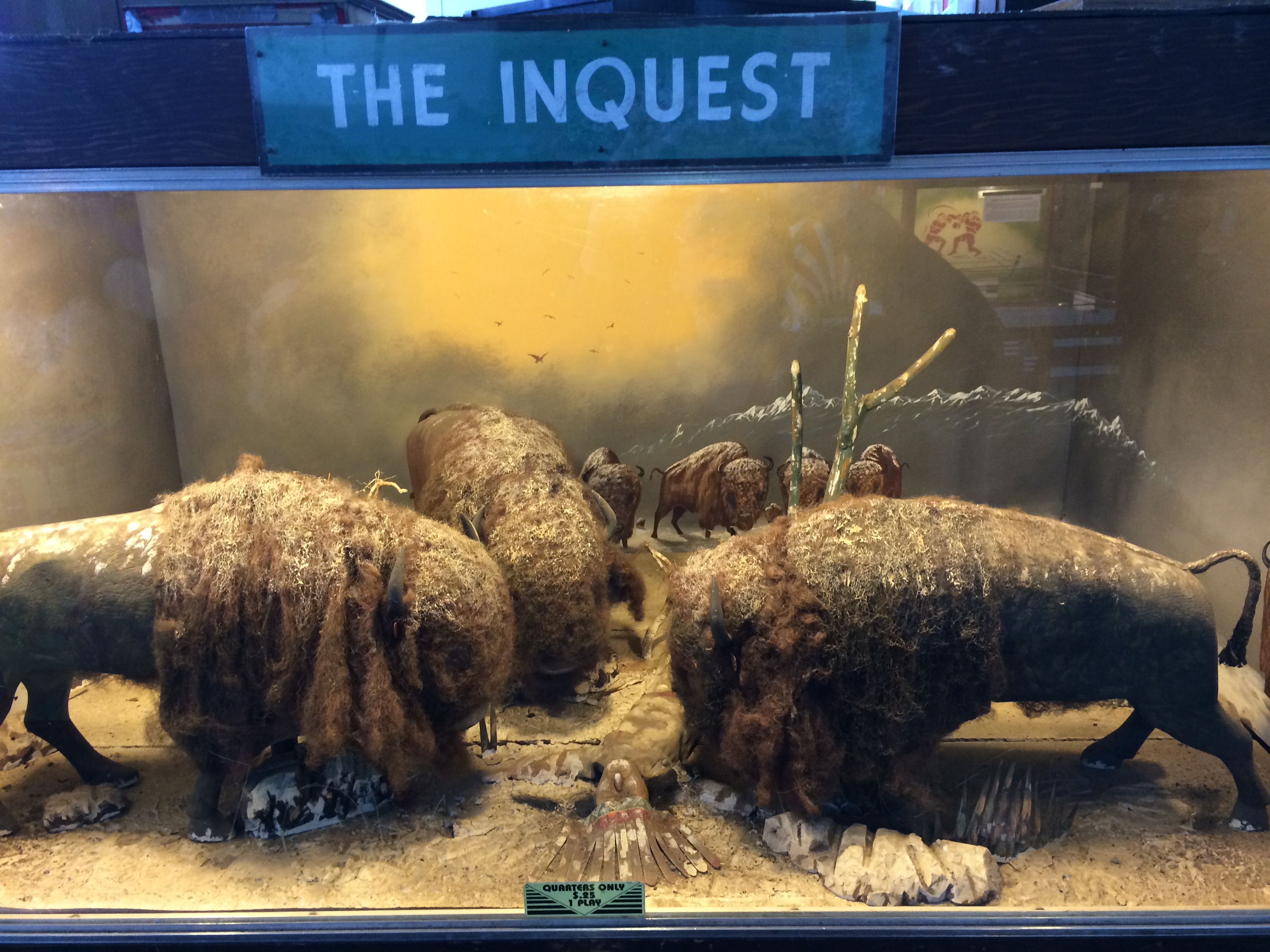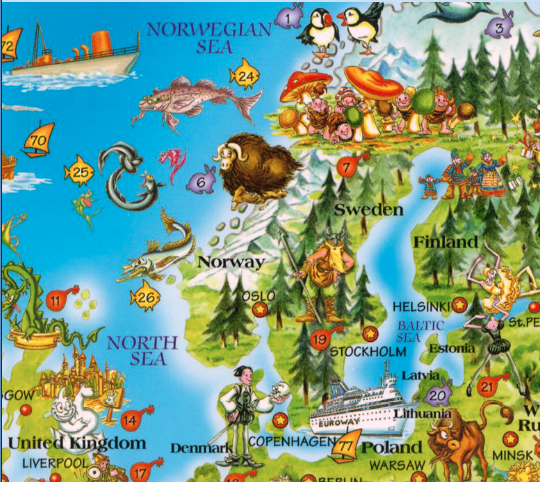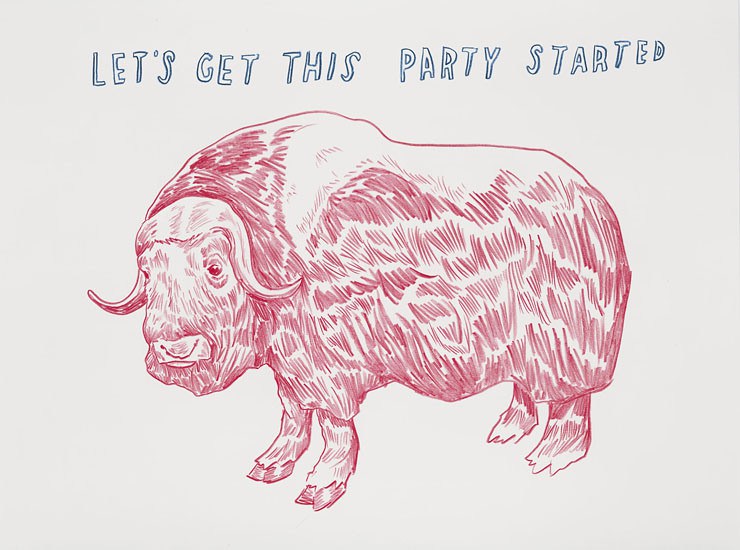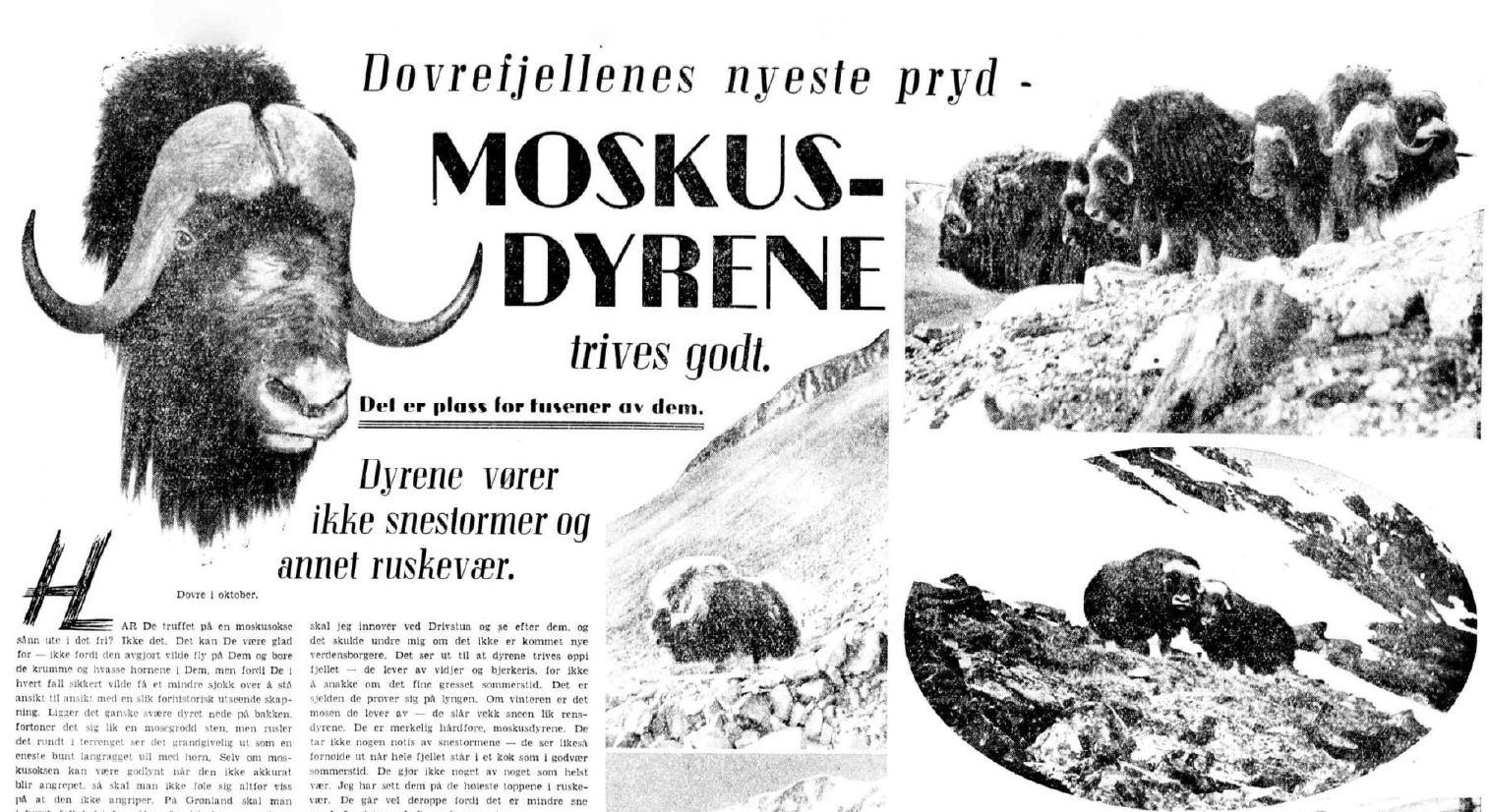
Muskox on the move
This week I’m in San Francisco for the American Society for Environmental History 2014 conference. I’ll be presenting a paper “Muskox on the move: Animal agency and crossing national boundaries”. This paper focuses specifically on what happened when small group of five muskoxen living in Norway migrated over the Swedish border in 1971.
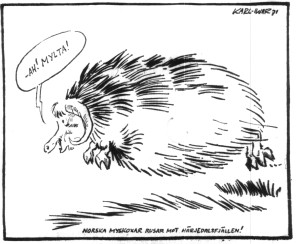
It is thought that this small herd was scared by some military exercises in Dovre, which caused them to move further afield than normal, but Swedes at the time thought that they were attracted by the good grazing. And indeed the grazing must have been pretty good because the herd stuck around in the border area, crossing between Norway and Sweden for seasonal grazing annually.
There were some concerns that the muskoxen might attack people — in fact, the earliest article I found in the local paper Östersunds-Posten was run under the headline “Wild muskoxen in Härjedalen. Warning: They can go on the attack!” But it appears that many thought the new muskox residents were a good thing. The local tourist industry in the area quickly grabbed onto the muskox as a potential draw. On 3 September, the Hamrafjället tourist hotel was already advertising its first expedition to “Muskoxen’s land” (Myskoxarnas land) to take place the next morning. A Norwegian tourist staying at the hotel scoffed at the offer saying, “It is Dovre which is ‘Muskoxen’s land’” which makes sense for a Norwegian. After all, Norway would no longer have sole claim to the animals; if muskox did settle in Härjedalen, they would be exploited to draw in tourists. A local newspaper article called the muskoxen a “world sensation” adding that “such a tourist attraction is something one could not even have dreamed of.”
As is typical with reintroductions, conflicts do start to arise, especially when the animals do well and reproduce. In June 1982, Lars Rensberg complained to the newspaper that his dog was injured by a muskox that had come onto his farm. In September the female Ida had migrated two counties further south and had to be drugged and trucked back to Jämtland. By the end of the year, Naturvårdsverket (the Environmental Protection Agency in Sweden) had begun having discussions begin about splitting up the herd and moving some to other areas in Sweden because the herd had grown to 26 animals.
In this discussion about relocating some muskoxen, a telling statement was made by the Älvdalen city council:
Muskoxen are very welcome here – just as long as they behave themselves and don’t cause any problems for tourism and reindeer herding.
This is the crux of animal agency and how some people chose to respond to it: the animals were represented as acting on their own and thus they would be held accountable for their actions.
But ascribing willfullness of actions to animals was not straightforward in the case of the Swedish muskox. The agency of the muskox when they moved across the national boundary became a contested topic. For environmentalist groups, the fact that the muskoxen crossed the line of their own accord made them legitimate Swedes:
The fact that muskoxen in historic times come from a spontaneous immigration from Norway in 1971, together with the fact that it was found in Sweden in prehistoric times, makes the current population belong to our natural biological diversity. (WWF Sweden written comment to Naturvårdsverket)
We judge [for Red Listing] even a species which newly establishes itself in Sweden of “its own power”, as soon as they have reproduced for a number of years (normally 10 years). However, species which have come into the country with help from people (e.g. Canadian goose, bison, muskoxen) must have been brought before 1800 and thereafter established a continuous population to be qualified for Red Listing evaluation (which does not apply to any of the three examples).
These scientists took the position that the muskox herd migrating through “its own power” to Sweden does not change the muskox’s status since their ancestors had been brought by humans back to Norway after 1800. The two positions view agency in different ways: one focuses on the agency of the individual animals who moved to Sweden; the other on the agency (or lack thereof) of the ancestor animals when they were moved to Norway in the 1940s & 50s.
Belonging or not belonging hinges on how we think about the agency of muskox on the move.
